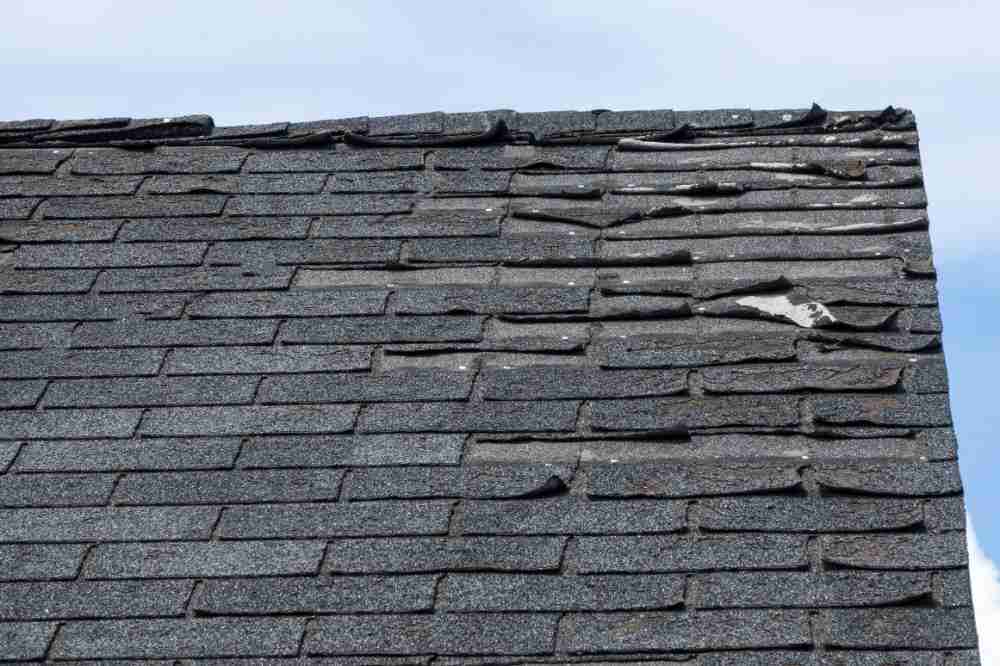Roof shingles are an integral part of any home, providing protection from the elements and enhancing its curb appeal. While modern roof shingles are typically made from materials like asphalt, wood, or metal, in the past, asbestos was a commonly used component. In this article, we’ll explore the presence of asbestos in roof shingles, the associated risks, and what homeowners can do when faced with this potentially hazardous material.

Understanding Asbestos in Roof Shingles
What is Asbestos?
Asbestos is a naturally occurring mineral known for its durability, heat resistance, and fireproof qualities. Due to these properties, it was once a popular choice in various construction materials, including roof shingles.
Asbestos in Roof Shingles:
In the mid-20th century, asbestos was incorporated into roofing materials to enhance their strength and fire resistance. Asbestos-containing roof shingles often appeared in homes built between the 1920s and 1980s. These shingles typically contain a mixture of asbestos fibers and other materials like cement or asphalt.
The Risks Associated with Asbestos in Roof Shingles
Health Concerns:
Exposure to asbestos fibers can pose significant health risks, particularly when the material becomes damaged or deteriorates. When asbestos-containing shingles degrade due to weathering or physical damage, they can release airborne asbestos fibers. Inhaling these fibers can lead to serious health issues, including lung cancer, asbestosis, and mesothelioma.
Deterioration and Damage:
Asbestos-containing shingles can deteriorate over time, especially in regions with extreme weather conditions. Cracking, chipping, or breakage of these shingles can release asbestos fibers into the environment, increasing the risk of exposure.
Options for Dealing with Asbestos-Containing Shingles
Assessment and Inspection:
If you suspect that your roof contains asbestos, it’s essential to have it assessed by a professional. Roofing experts can inspect the shingles and provide guidance on the best course of action.
Encapsulation:
In some cases, encapsulation may be an option. This involves applying a sealant or coating over the asbestos-containing shingles to prevent the release of fibers. However, encapsulation is not a permanent solution and may need periodic maintenance.
Removal and Replacement:
Complete removal and replacement of asbestos-containing shingles is often the safest long-term solution. This process should only be carried out by licensed asbestos removal professionals who follow strict safety protocols to minimize exposure risks.
Safety Precautions During Removal
If you decide to remove asbestos-containing shingles, it’s crucial to take specific safety precautions:
- Professional Help: Hire licensed asbestos removal experts who are trained to handle asbestos safely.
- Safety Gear: Workers should wear appropriate protective gear, including respirators, disposable coveralls, and gloves.
- Containment: The work area should be properly sealed to prevent the spread of asbestos fibers.
- Wet Methods: Wetting the shingles helps reduce the release of fibers during removal.
- Proper Disposal: Dispose of asbestos waste in compliance with local regulations.
Conclusion
While asbestos in roof shingles was once common, it is now recognized as a health hazard. Homeowners with older roofs should be aware of the potential risks and take appropriate action when necessary. Whether through encapsulation or removal, addressing asbestos-containing shingles is crucial for the safety of your home and those who live in it. Always seek advice from experienced professionals in asbestos handling to guarantee the safe and efficient management of this material.



Leave a Reply